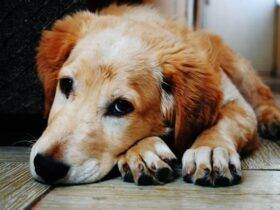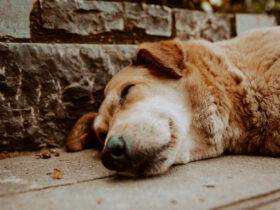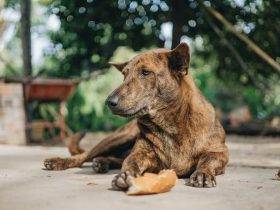what to feed a sick dog with no appetite
When our dogs are feeling under the weather, the last thing they seem to want is food. But it’s important for sick pets to eat something, even if just a little, to keep their strength up and aid the healing process. As an owner, it can be worrisome seeing their bowl untouched. So, the obvious question and concern for pet owners is what to feed a sick dog with no appetite. in this guide we will provide tips and recipes on how to encourage appetite in sick dogs without putting undue stress on their digestive systems. By learning options to tempt taste buds and entice smells, you can support your pup’s recovery.
What to do when your pet is sick and has no appetite
Consulting the Vet
If your dog isn’t eating for over 24 hours, it’s imperative to contact your vet for an examination. Their diminished appetite could signal a serious underlying medical issue needing treatment. The vet will check for:
- Dental problems like gingivitis preventing eating
- Intestinal blockages
- Liver or kidney disease
- Infection or toxicity requiring medication
They may prescribe anti-nausea drugs, appetite stimulants or nutritional supplements for pets to jump start digestion again. Follow all medical advice for your dog’s unique condition.
what to feed a sick dog with no appetite
Low-Residue Diet
When recovering from diarrhea, vomiting or gastrointestinal upset, a bland, easily digestible diet is gentler on their system:
- Boil white meat chicken or turkey without skin or bones until very soft. Remove seasonings.
- Poach fish fillets like cod or haddock in water just until flaky.
- Hard boil and peel eggs, mash the yolks.
- Steam white rice, oats or pasta until very soft.
- Puree or finely chop vegetables like pumpkin, sweet potato or banana.
- Simmer boneless, skinless chicken or beef in broth until flavorful but tender.
A low-fat, low-fiber meal appeals when nausea lingers or antibiotics are involved. Steam ingredients instead of frying.
Appetite Stimulants
Enhance flavors and aromas they find hard to resist:
- Bone broth: Slow simmer meaty bones in water for natural gelatin, minerals and savory taste.
- Grated cheese: Small amounts of cheddar, parmesan or cream cheese add zing.
- Natural yogurt: Plain, unsweetened Greek or whole milk variety soothes tummies.
- Salmon oil: Quality liquid or gel oils contain omega-3s smelling of the sea.
- Fresh herbs: Chives, basil or parsley boost flavors without residue.
- Healthy homemade gravy: Thicken bone broth with cornstarch or arrowroot.
Presentation is key – aroma draws dogs in so bowl mixtures attractively.
Toppers and Mix-Ins
Sprinkle enticers on soft foods already accepted:
- Cooked, pureed meat baby food
- Shredded boiled chicken or tuna
- Canned sardines or salmon
- Small cooked pieces of meat or fish fillets
- Shredded vegetables like green beans or broccoli
- Finely chopped hard-boiled eggs
- Cottage cheese or ricotta
- Peanut, almond or sunflower butter spreads
Vary protein sources and blend colors/textures for visual appeal nourishing multiple nutritional angles.
Frozen Treats
Chill items using silicone molds or bento boxes to provide cool relief on inflamed gums or mouths:
- Finely pureed meats/fish mixed with bone broth or yogurt
- Mashed banana rounds
- Softened creamy peanut butter or almond butter
- Pureed sweet potato or pumpkin puree
- Soft cooked rice or pasta
- Finely diced soft fruit like melon or berries
Freezing prevents any choking risk. Start with pea-sized quantities and work up slowly.
Decoys and Distractions
Tempt smell and curiosity through aromatic associations:
- Place their bowl on a hiding toy filled with a loved plush or chew
- Dab broth around their snout before allowing a taste test
- Hand feed tiny pieces paired with praise and affection
- Add healthy toppers your dog adores like a shredded treat
- Play the TV or quiet music as distractions from nausea
- Sit nearby calmly reading or working as company
Take pressure off eating by redirecting mental stimuli positively. Remove unfinished meals after 15-20 minutes without stress.
As Appetite Returns
Gradually transition back to a complete diet:
- Begin replacing 25% of bland food with regular canned or kibble portions
- Slowly work up by adding a spoonful extra of regular food daily
- Introduce stews, soups or casseroles combining soft textures
- Puree homemade foods integrating protein, carb and veg ratios
- Add oil/grease sparingly back into recipes when tolerated
- Watch for setbacks and revert to gentle foods if relapsing
By taking it easy, nutrient needs get met without overloading their recovery guts. Consult your vet before major diet changes or if issues persist. With patience and creativity, appetite often revives.
home Tips on what to feed a sick dog with no appetite
Reduce stress and provide comfort measures:
- Keep indoor area warm, draft-free and low stimulus
- Play gentle music or TV for distraction from nausea
- Brush fur gently or rub head/paws lovingly to soothe
- Place familiar blanket or bed in a cozy, quiet room
- Limit handling/activity but spend quality time closeby
- Offer water frequently in small quantities via syringe
Prioritizing rest aids healing every step of the way. Continued monitoring and modifications keep them nourished through recovery.






Leave a Reply